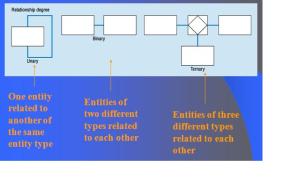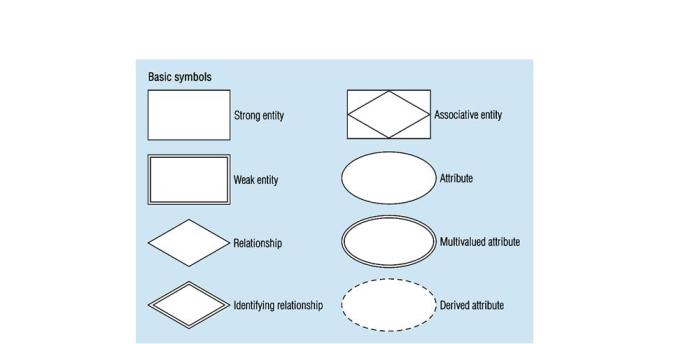· Characteristics of entities
· In Chen model, attributes are represented by ovals and are connected to entity rectangle with a line
· Each oval contains the name of attribute it represents
· In Crow’s Foot model, attributes are written in attribute box below entity rectangle
· Should be meaningful
· Rule of thumb is to prefix attribute with entity name
– i.e. CUSTOMER_NAME versus NAME
· Can be single valued
– An attribute that can have only a single value
– i.e. social insurance number
· Can be multi valued
– An attribute that can have many values
– i.e. an employee has many skills
Derived Attributes
· Attribute whose value may be calculated (derived) from other attributes
· Need not be physically stored within database
· Can be derived by using an algorithm
· Can show in the conceptual model
Null Value Attribute
· Attribute that doesn’t have any value for a record
Mandatory Value Attribute
· Attribute that must have a value



